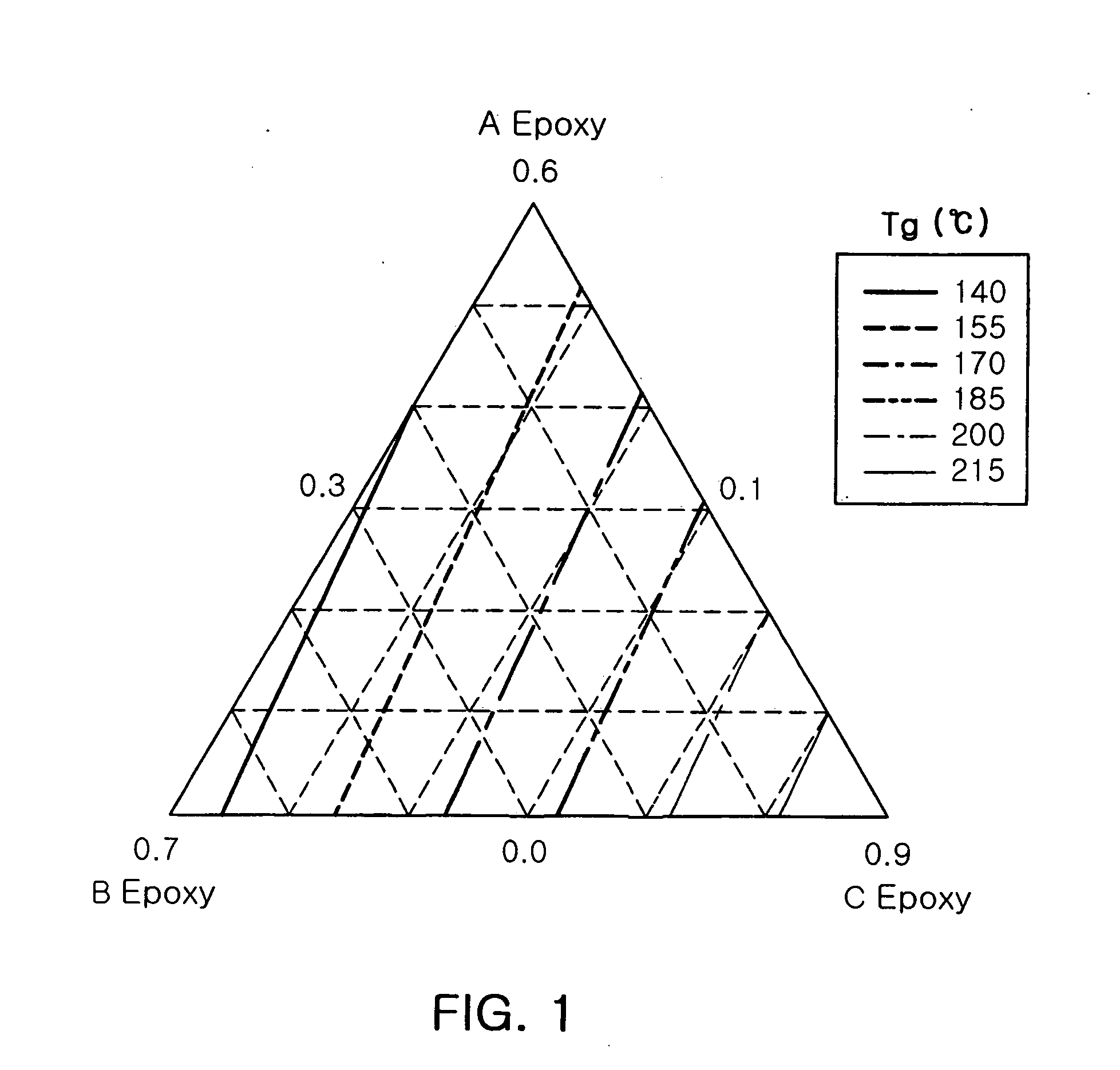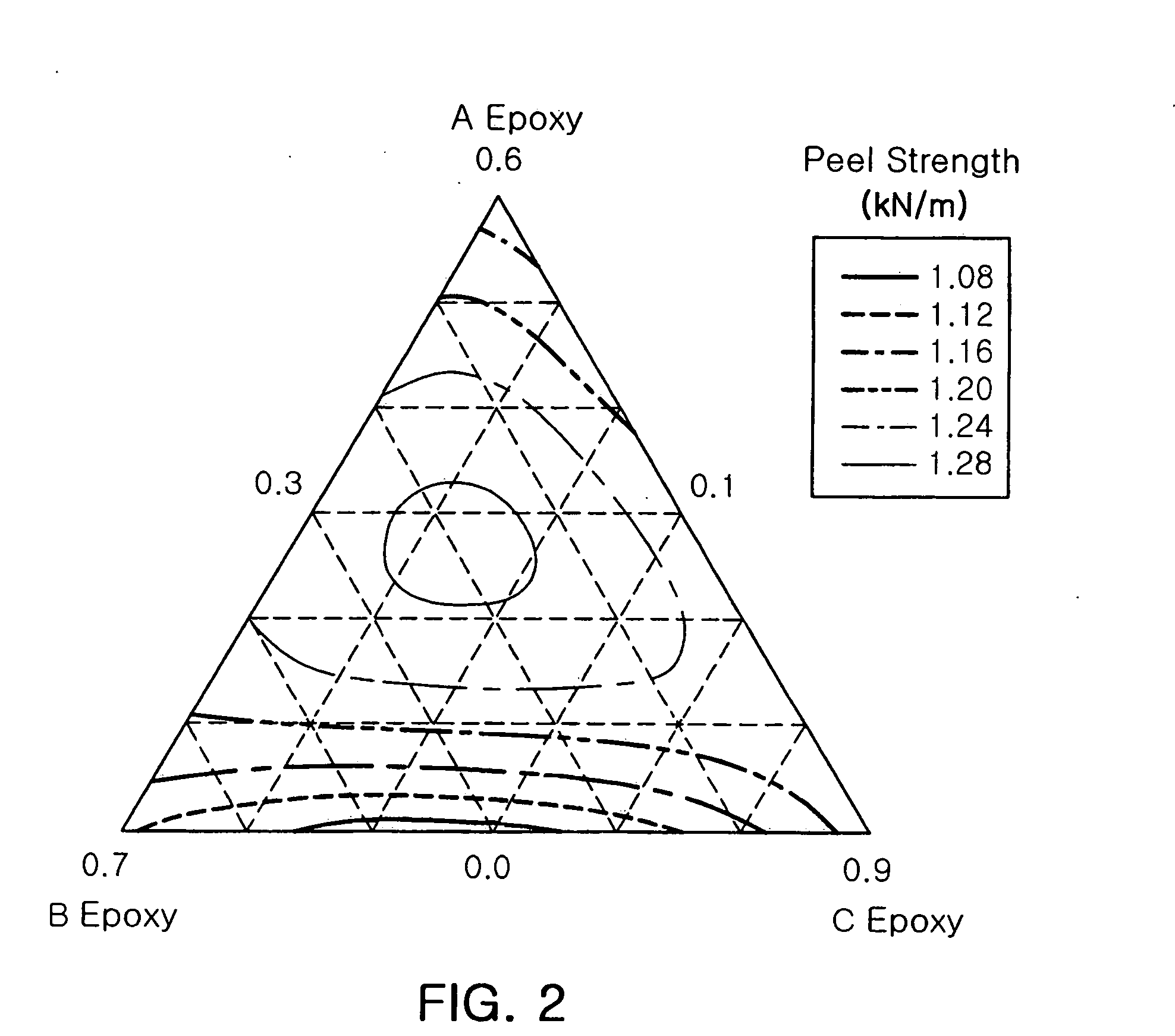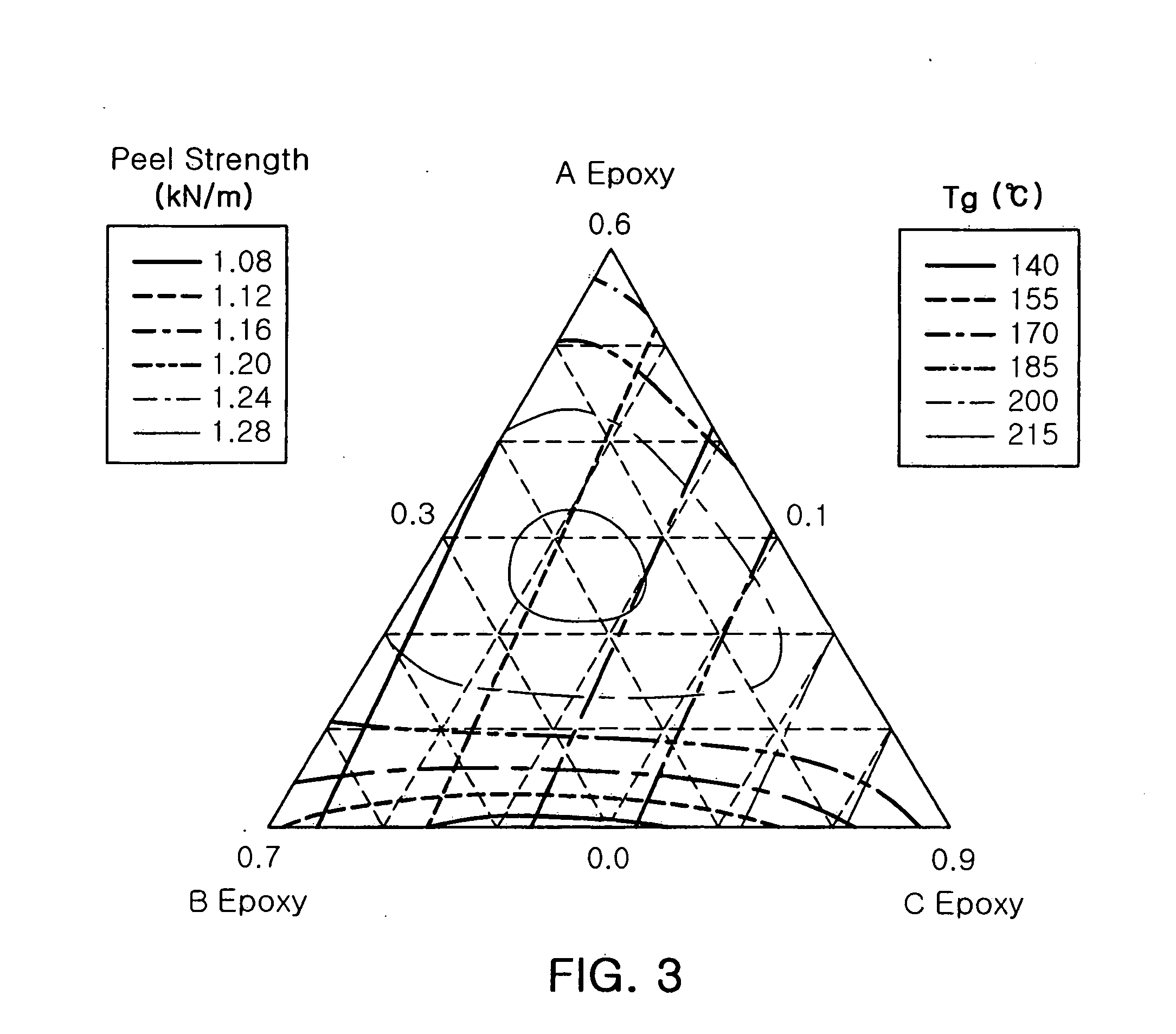Resin composition for embedded capacitors having excellent adhesive strength, heat resistance and flame retardancy
a technology of resin composition and embedded capacitors, which is applied in the direction of fixed capacitors, synthetic resin layered products, electrical appliances, etc., can solve the problems of reducing the peel strength of resin to a metal foil, affecting the peel strength of resin, so as to achieve peel strength, tg and flame retardancy
- Summary
- Abstract
- Description
- Claims
- Application Information
AI Technical Summary
Benefits of technology
Problems solved by technology
Method used
Image
Examples
example 1
[0054] A bisphenol-A epoxy resin (epoxy resin A), a brominated epoxy resin containing 40 wt % or more bromine (epoxy resin B), and a bisphenol-A novolac epoxy resin (epoxy resin C) were mixed and dissolved in an amount of 80 wt % in 2-methoxyethanol. To the reaction solution, 0.8 eq bisphenol-A novolac resin serving as a curing agent and 0.1 wt % 2MI (2-methylimidazole) serving as a curing accelerator were further added, and the obtained solution was then mixed at 50° C. The resultant mixture was cast on a Cu foil and then semi-cured to a B-stage for 2.5 min in an oven at 170° C., to obtain a resin coated copper foil (RCC). Subsequently, two RCCs were laminated at 200° C. and cured. Thereafter, Tg, peel strength, and flame retardancy (whether meeting the V0 rating) were measured.
[0055] The results for Tg and peel strength varying with the amount of epoxy resin are shown in Table 2, below, and are also contour plotted in FIGS. 1 to 3.
TABLE 2EpoxyEpoxyEpoxyPeelResin AResin BResin C...
example 2
[0056] An 80 wt % mixture comprising 20 wt % of a bisphenol-A epoxy resin (epoxy resin A), 20 wt % of a brominated epoxy resin containing 40 wt % or more bromine (epoxy resin B), and 60 wt % of a bisphenol-A novolac epoxy resin (epoxy resin C) was dissolved in 2-methoxyethanol. To the reaction solution, 0.8 eq bisphenol-A novolac resin, serving as a curing agent, and 0.1 wt % 2MI, serving as a curing accelerator, were further added and the obtained solution was then mixed at 50° C. The resultant mixture was further mixed with a dispersing agent, a defoaming agent, and BaCaTiO3 amounting to 45 vol % as a filler, cast on a Cu foil and then semi-cured to a B-stage for 2.5 min in an oven at 170° C., to obtain an RCC. Subsequently, two RCCs were laminated at 200° C. and cured. Then, Tg, peel strength, and flame retardancy (whether meeting the V0 rating) were measured.
[0057] The measured properties compare those in Example 1 having the same composition as the above resin mixture, with th...
PUM
| Property | Measurement | Unit |
|---|---|---|
| Temperature | aaaaa | aaaaa |
| Peel strength | aaaaa | aaaaa |
| Peel strength | aaaaa | aaaaa |
Abstract
Description
Claims
Application Information
 Login to View More
Login to View More - R&D
- Intellectual Property
- Life Sciences
- Materials
- Tech Scout
- Unparalleled Data Quality
- Higher Quality Content
- 60% Fewer Hallucinations
Browse by: Latest US Patents, China's latest patents, Technical Efficacy Thesaurus, Application Domain, Technology Topic, Popular Technical Reports.
© 2025 PatSnap. All rights reserved.Legal|Privacy policy|Modern Slavery Act Transparency Statement|Sitemap|About US| Contact US: help@patsnap.com



